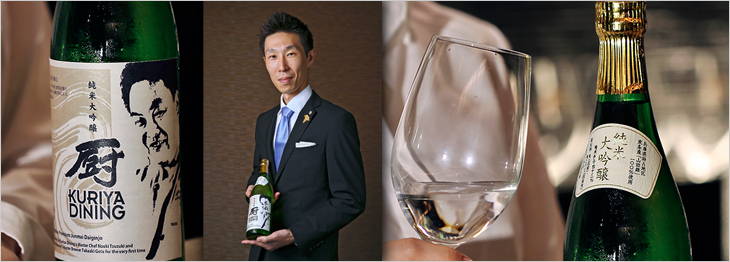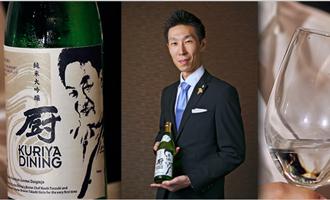Featured Interview with Sake Sommelier Takayoshi Aoki

Q: Have you ever experienced Japanese sake and food pairing? Which pairing of sake and food do you like?
A: Similar to wine, sake can be paired with food according to certain rules. If you would like to know more, I recommend you to join me at ToTT’s Sake Paring Dinner on Friday, 29 April at Sumiya Suntec City. This Japanese restaurant is managed by International Sake Sommelier Naoki Tsuzuki, who is also the master chef of the award-winning fine dining restaurant, Kuriya Dining.
At this sake-pairing dinner, each of Master Chef Tsuzuki’s creative dishes will be paired with his choice of sake. All sake brands used for this event have distinctive characteristics, two of which are rare premium sake that are available exclusively at Sumiya.
Sake pairing works just like wine does. The key to pairing sake and food is simple – typically, lighter dishes are paired with light and smooth sake and rich foods with rich-flavoured and full-bodied sake. For example, a light dish such as whitefish sashimi goes well with mild-flavoured Ginjo-shu and Dai Ginjo-shu while grilled fatty winter fish is best paired with aromatic and full-bodied Junmai-shu.
Contrary to popular belief, sake can also be enjoyed with a wine glass. When poured into the glass, sake comes into contact with oxygen and this oxidization will improve the distinctive aroma of sake. By using a wine glass, the sake’s rising aroma will allow you to fully enjoy its elegant fragrance. If you cannot finish drinking an entire bottle, do be adventurous and enjoy the remainder with a wine glass on the next day. You might make a new discovery of the sake!
Please take this opportunity to experience the wonderful world of Master Chef Tsuzuki’s fine Japanese cuisine and its premium and seasonal sake.
Prior to this event on the same day, I will conduct a sake cocktail-making demonstration at ToTT @ Suntec. There, I will introduce two kinds of sake cocktails which can be made easily with your leftover sake. I will also introduce useful utensils to make sake cocktails.
Master Chef Tsuzuki and I look forward to welcoming you at the Sumiya Sake-Pairing Dinner. Thank you.
Takayoshi Aoki
International Wine & Sake Sommelier
Notes:
Sake is classified according to the proportion of the rice grain that remains after polishing. If the rice polishing ratio is 60% or lower (meaning that 40% or more of the grain is removed), the sake produced with it is referred to as Ginjo-shu or Junmai Ginjo-shu. When the rice polishing ratio is 50% or lower (meaning that 50% or more of the grain is removed), the sake is referred to as Daiginjo-shu or Junmai Daiginjo-shu.
The term Junmai-shu refers to sake made with nothing other than rice, water, and kōji (mould culture for converting rice starch to sugar). When Junmai-shu is made with rice of a lower rice polishing ratio, it is referred to as Junmai Ginjo-shu or Junmai Daiginjo-shu.
(Source: http://j-tradition.com/en/sake/shurui/ginjou.html)

